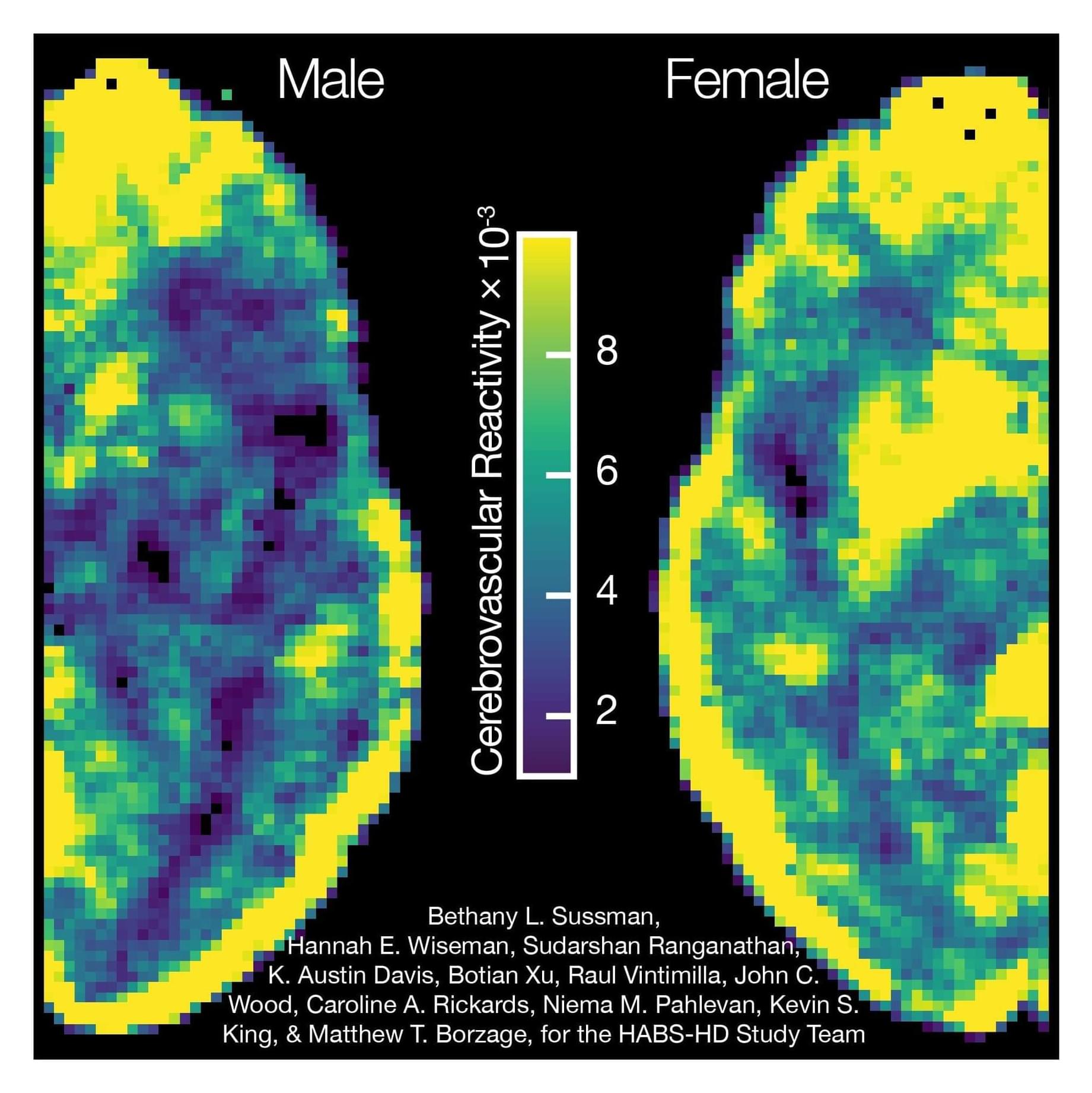A research team led by the Borzage Laboratory at Children’s Hospital Los Angeles tested a new functional magnetic resonance imaging (fMRI) analysis method to measure cerebrovascular health in aging adults. What they found was unexpected and validated the usefulness of this method for measuring neurovascular aging in childhood diseases.
The researchers measured the cerebrovascular reactivity of the brains of 53 men and women between the ages of 51 to 83. Cerebrovascular reactivity is the ability of the blood vessels in the brain to dilate in response to a stimulus. The fMRI method they used—known as blood oxygen level dependent-cerebrovascular reactivity (BOLD-CVR)—measures the ability of the brain’s vessels to flexibly regulate blood flow in response to changes in carbon dioxide levels.
“How well the vessels react reveals a lot about your brain health,” says lead author Bethany Sussman, Ph.D., Research Scientist, Neonatology, at CHLA. “If a certain part of the brain can’t perform that function very well, that area is likely more susceptible to stroke.
